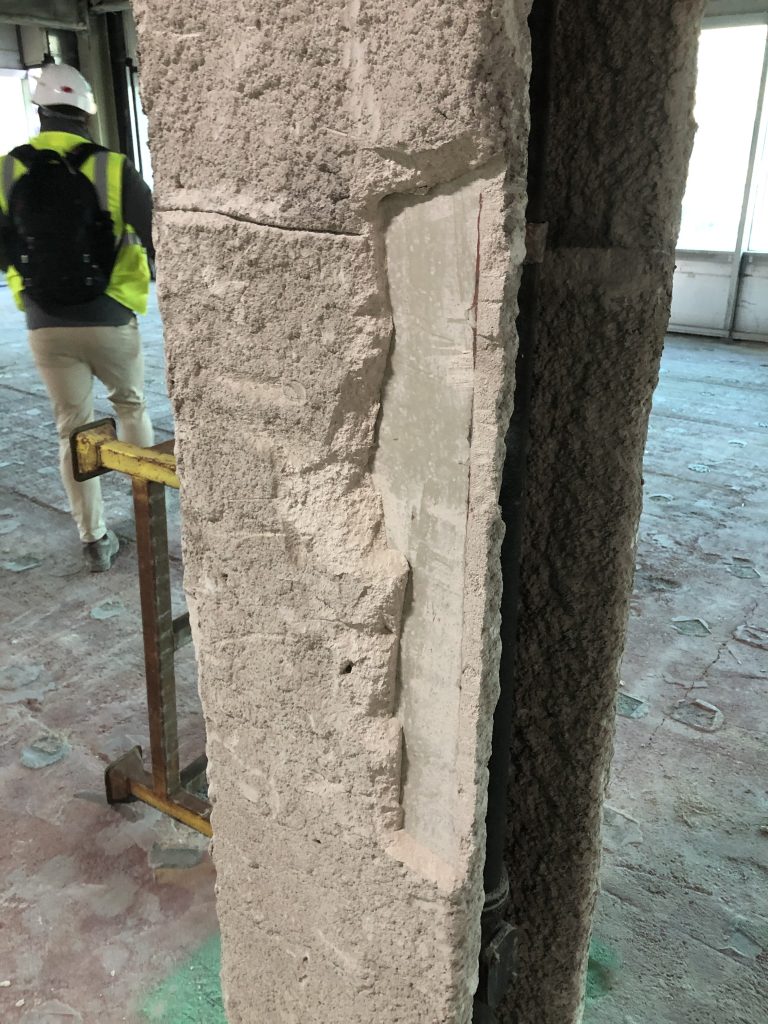Understanding Cementitious Fireproofing
Cementitious fire protectant coatings are a vital part of building safety. Applied to structural steel, these coatings slow the spread of fire whilst maintaining the integrity of the building during high-heat events. Essentially, they act as a thermal barrier, giving occupants and emergency services more time to respond in the event of a fire. Their use is widespread in commercial, industrial and sometimes residential buildings because they offer a cost-effective and reliable solution for fire protection. Nowadays, intumescent coatings have grown in popularity in the industrial & commercial spheres for their sleek finish, thin coating and durability. Amongst the modern architectural market, an increasing amount of intumescent coatings are applied and cementitious coatings removed.
What is cementitious fireproofing?
To protect steel elements within a building’s construction, a cementitious coating can be applied. This coating consists of cement or gypsum, which, when wet, forms a durable surface with high fire resistance. Cementitious sprays are applied in multiple layers in order to protect the underlying material. When finished, it forms a barrier that delays the rate of heat transfer in the event of a fire. Unlike paint-on fire retardants, such as intumescent paint, cementitious coatings create a substantial physical barrier that insulates the steel. Over time, these coatings vary in texture and hardness, influenced by factors such as age, environmental conditions and the original formulation used during application.
Removing cementitious coatings
Removal can vary depending on the texture of the concrete. Some coatings remain soft and flaky whilst some brittle and tougher to remove. Soft coatings, as shown below, are generally easier to remove as they can be scraped or chipped away without any excessive risk of damaging the steel underneath.
Below, see a small section our team simply scraped off… and watch how we did it real time on our socials.
